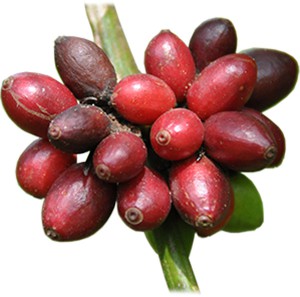The coffee-plant is a shrub that belongs to about go kinds of coffea’s genus, among which the most renowned one is “Coffea Arabica” that gives the best fruits and is the most cultivated one.
The plant has a trunk with primary and secondary branches and light green lanceolate oval leaves. The white flowers are concentrated and they rise near the armpit of the leaf, several blooms take place in a year.
After the bloom, lasting two days, fruits come, at first they are yellow-green and then, after few months, they ripen until they become shiny-red berries.
Two seeds are hidden in the pulp, they are equal, convex at the outside, flat at the inside.

